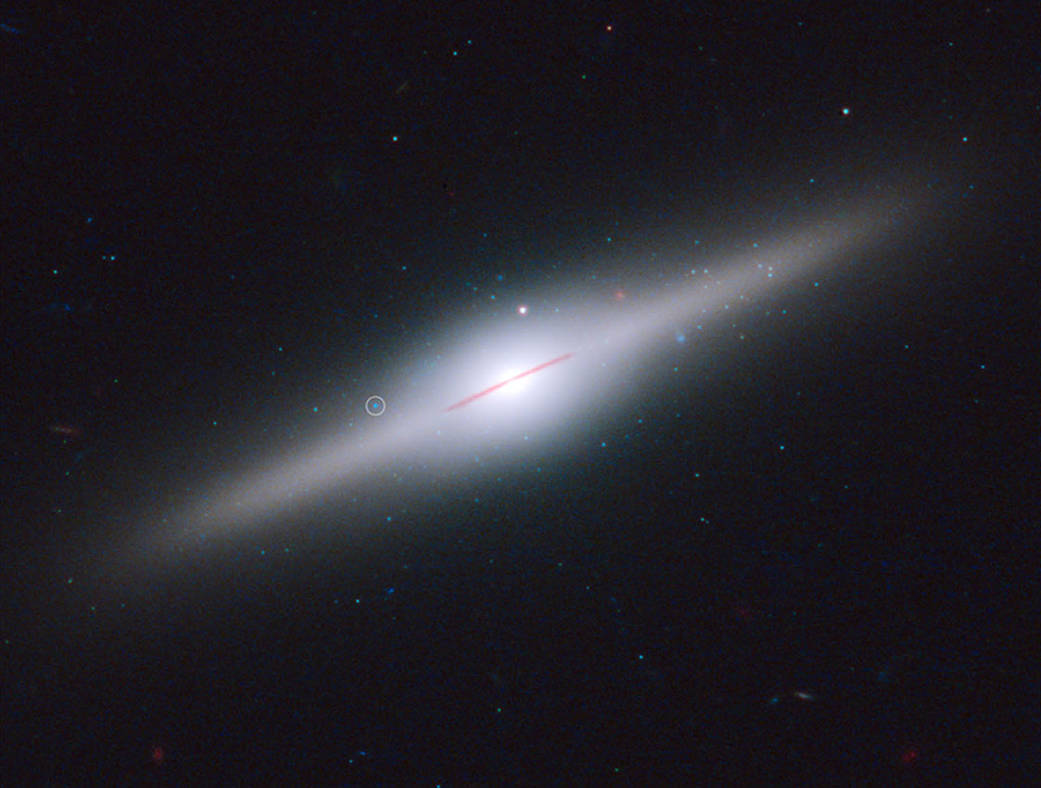In our vast universe, the heaviest black holes grew from seeds. Nourished by the gas and dust they consume, or by merging with other dense objects, these seeds grow in size and heft to form the centers of galaxies, such as our own Milky Way. But unlike in the realm of plants, the seeds of giant black holes must have been black holes, too. And no one has ever found these seeds — yet.
One idea is that supermassive black holes — the equivalent of hundreds of thousands to billions of Suns in mass — grew from a population of smaller black holes that has never been seen. This elusive group, the “intermediate-mass black holes,” would weigh in somewhere between 100 and 100,000 Suns. Among the hundreds of black holes found so far, there have been plenty of relatively small ones, but none for sure in the intermediate mass-range “desert.”
In this image, a galaxy called ESO 243-49 is home to an extremely bright object called HLX-1. Circled in this image, HLX-1 is the most likely example of a black hole in the intermediate mass range that scientists have found.
Image Credits: NASA; ESA; and S. Farrell, Sydney Institute for Astronomy, University of Sydney
在我们浩瀚的宇宙中,最重的黑洞是由种子形成的。这些种子由它们所消耗的气体和尘埃滋养,或者通过与其他致密物体的结合,它们的体积和重量不断增大,形成了星系的中心,比如我们的银河系。但与植物领域不同的是,巨大黑洞的种子肯定也是黑洞。至今还没有人发现过这些种子。
一种观点是,超大质量黑洞——相当于数十万到数十亿个太阳的质量——是由从未见过的更小的黑洞群发展而来的。“中等质量的黑洞”是一个难以捉摸的星系群,其质量介于100万到10万个太阳之间。在迄今发现的数百个黑洞中,有许多相对较小的黑洞,但没有一个位于中等质量范围的“沙漠”中。
在这张图片中,一个名为ESO 243-49的星系是一个极其明亮的天体HLX-1的家园。如图所示,HLX-1极有可能是科学家发现的中等质量黑洞的例子。
图片提供:NASA; ESA; and S. Farrell, Sydney Institute for Astronomy, University of Sydney



